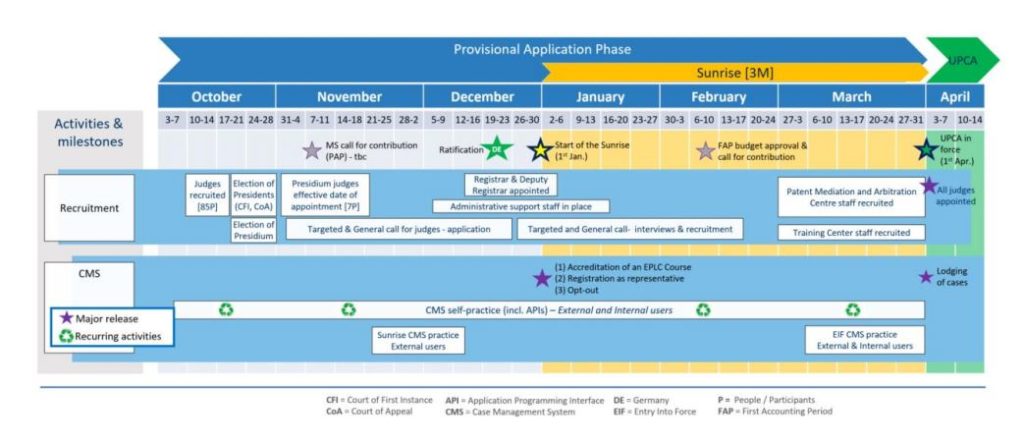On 6 October 2022, the Preparatory team for the Unified Patent Court announced an updated and detailed implementation timetable until the entry into force of the Agreement on a Unified Patent Court (UPCA). Thus, there are increasing indications that the UPC can be expected to become operational fairly soon (we already reported on this blog on 15 July 2022).
This timetable (see chart below) includes and depicts all the key activities and milestones of the UPC in the last months of what is known as the Provisional Application Phase (PAP), which began on 19 January 2022:

The following key data can be taken from this chart:
- Germany is expected to deposit its instrument of ratification in the week before Christmas, thus giving the go-ahead for the entry into force of the UPCA.
- The Sunrise Period, a three-month transition period, is scheduled to begin on 1 January 2023. From that date onwards, representatives may register with the CMS of the UPC and requests to opt out of the UPC’s jurisdiction can be filed. In addition, the transitional measures adopted by the European Patent Office for a timely claim of the unitary patent (“early request for unitary effect” and “request for deferment of the decision on the grant of the European patent”) will take effect.
- On 1 April 2023, the UPCA isexpected to enter into force and the UPC is expected to become operational. From that date, actions and proceedings for which the UPC has jurisdiction may be brought before the new court.
This so-called “roadmap” is only intended to reflect the current status of the project and is therefore subject to change. However, it will have a certain binding, as it is explicitly stated that any changes, impacting key deliverables and milestones will be communicated.
It is therefore high time for all patent proprietors to familiarize themselves with the new rules and aspects of the unitary patent and the Unified Patent Court in the expected remaining three months. In addition, they should review their patent portfolios with a view to the questions “Unitary patent: yes or no?” and “Opt-out: yes or no?” and check their existing patent-related contracts for the need to adapt them accordingly.
